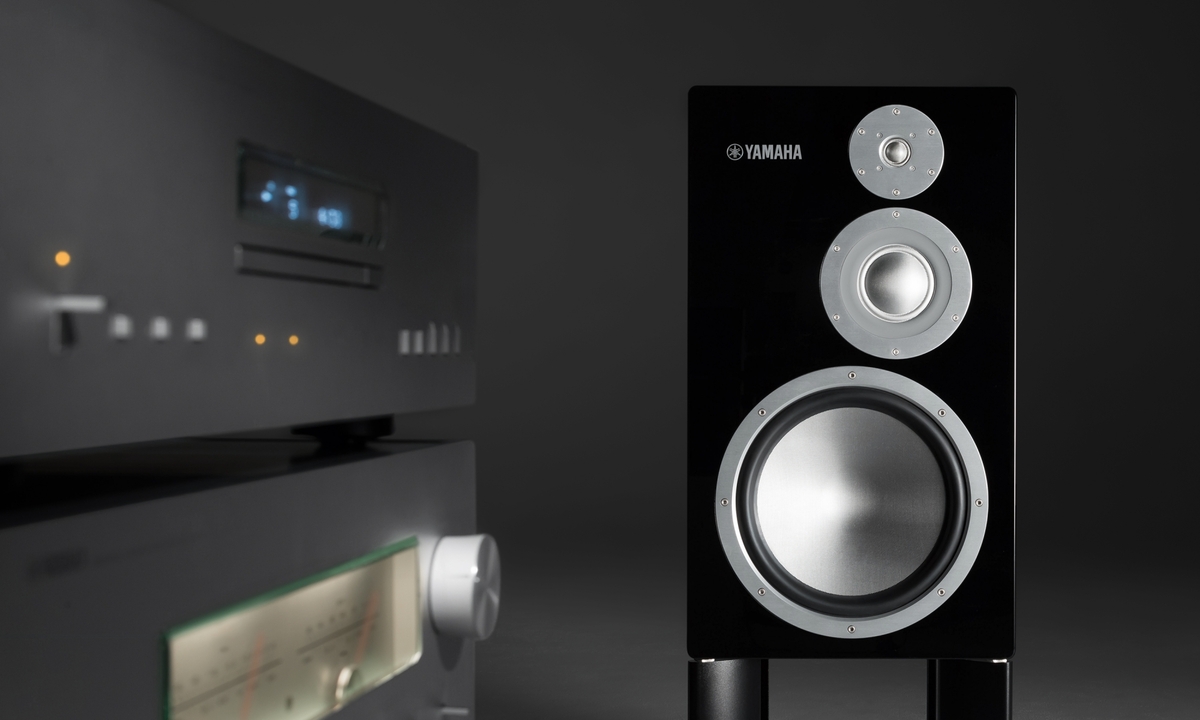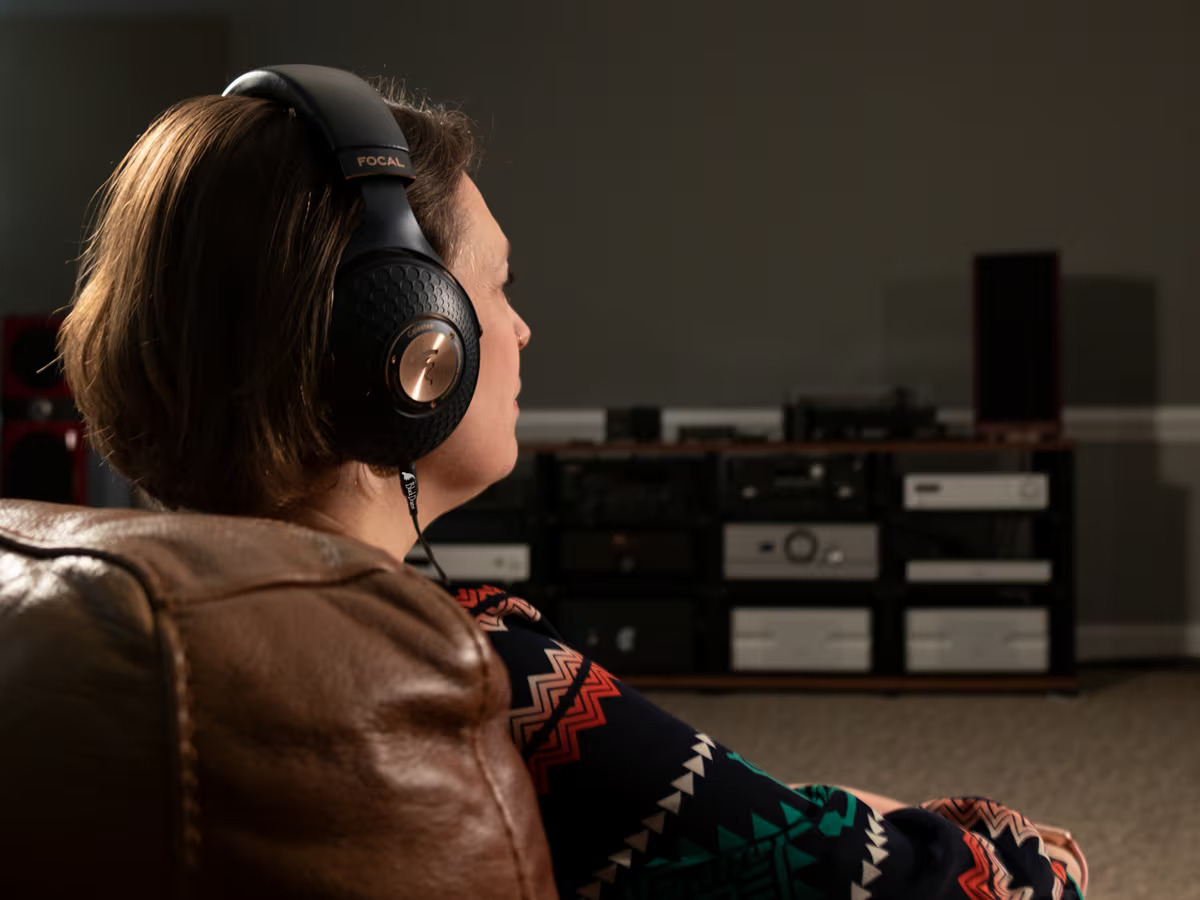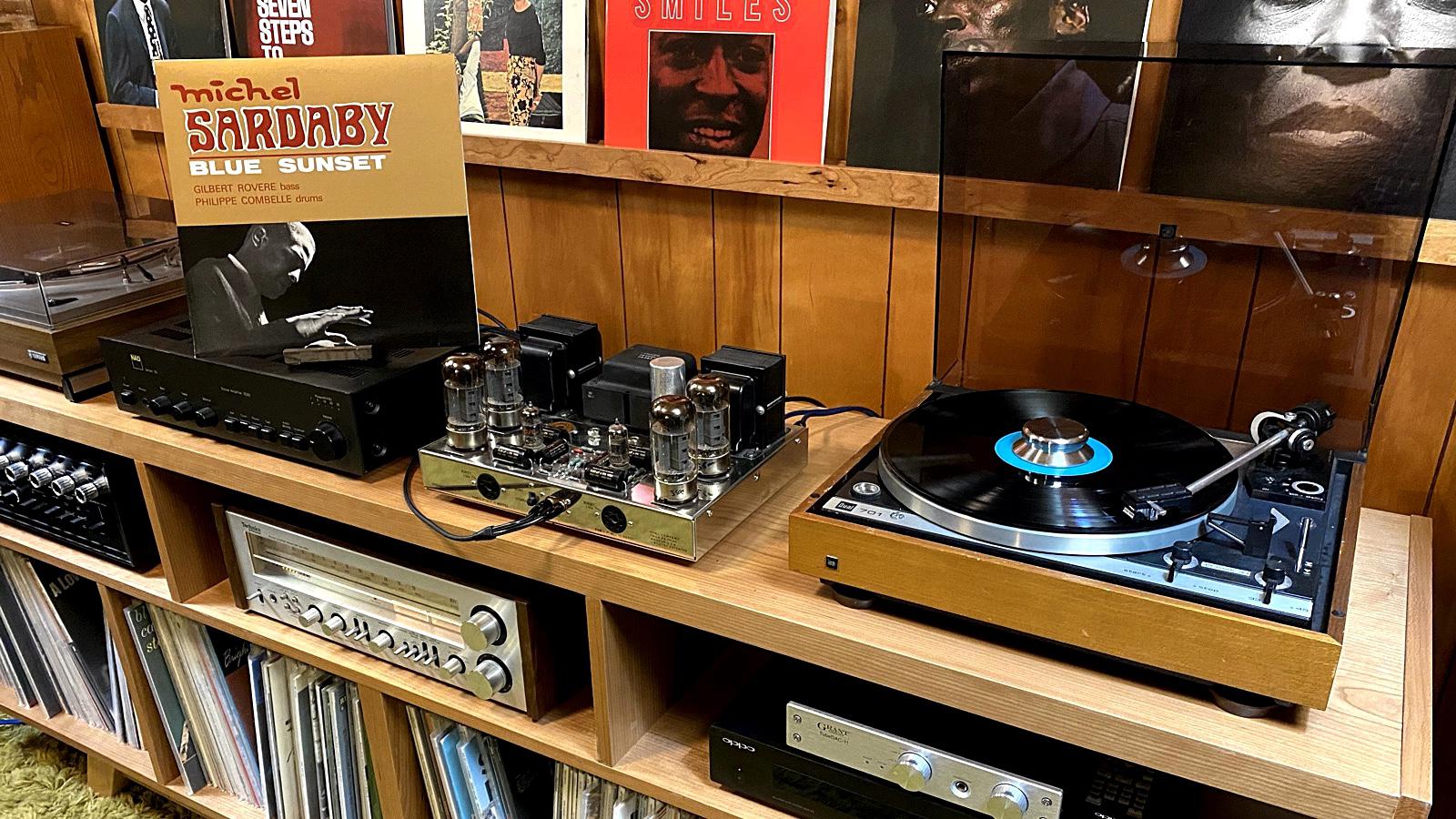Home>Production & Technology>Audiophile>How To Get Started Audiophile


Audiophile
How To Get Started Audiophile
Modified: February 18, 2024
Learn how to start your journey as an audiophile and discover the best equipment, tips, and resources to enhance your music listening experience. Become an audiophile today!
(Many of the links in this article redirect to a specific reviewed product. Your purchase of these products through affiliate links helps to generate commission for AudioLover.com, at no extra cost. Learn more)
Table of Contents
Introduction
Welcome to the world of audiophiles, where the pursuit of sonic perfection is a way of life. Being an audiophile goes beyond simply listening to music; it’s a passion for experiencing music in its purest and most immersive form. If you’re new to the audiophile community, you’re in for a treat.
But wait, what exactly is an audiophile? Well, audiophiles are individuals who have a deep appreciation for high-quality audio reproduction. They crave for the purest and most accurate sound possible, and spare no expense in their quest for the ultimate listening experience.
Being an audiophile is not just about having expensive audio equipment; it’s a lifestyle. It’s about dedicating time, effort, and resources into creating the perfect listening space, carefully selecting equipment, and fine-tuning every aspect of the audio chain to achieve the best sound quality.
In this comprehensive guide, we will take you through the exciting world of audiophilia and help you get started on your journey to becoming an audiophile. Whether you’re a music lover looking to enhance your listening experience or a curious individual fascinated by the intricacies of audio reproduction, this guide will provide you with the necessary knowledge to embark on your audiophile adventure.
So, get ready to dive into the depths of audiophile bliss. From setting up your listening space to selecting the right equipment, and from sourcing high-quality music to optimizing your listening experience, we will cover it all. Let’s embark on this sonic journey together and discover the art of true music appreciation.
Understanding Audiophile
To truly embrace the world of audiophiles, it’s important to understand the key concepts and terminology that define the audiophile experience. Let’s delve into the fundamentals.
First and foremost, audiophiles prioritize sound quality above all else. They crave for accurate and faithful music reproduction. This means that every detail of the recording should be faithfully reproduced, from the subtle nuances of a singer’s voice to the delicate plucking of a guitar string.
One of the essential aspects of audiophilia is the belief that a high-quality audio system can make a significant difference in the listening experience. Audiophiles invest in speakers, amplifiers, DACs (Digital-to-Analog Converters), and other components that are designed to preserve the integrity of the sound signal and faithfully reproduce it.
Another important concept is the difference between lossy and lossless audio formats. Lossy formats like MP3 and AAC sacrifice some audio quality in order to reduce file size, while lossless formats like FLAC and ALAC preserve the entire audio signal without any compromise. Audiophiles prefer lossless formats for their superior sound quality, as they offer a more transparent and detailed listening experience.
Furthermore, the listening space plays a crucial role in the audiophile journey. Acoustic treatments, such as sound-absorbing panels and diffusers, are used to minimize reflections and optimize the soundstage. The placement of speakers and seating position are meticulously adjusted to achieve the best possible sound imaging and balanced frequency response.
Lastly, it’s important to mention the concept of “golden ears.” Audiophiles are often referred to as having golden ears, meaning they have a keen ability to discern subtle differences in audio quality. This skill, acquired through years of experience and training, allows them to identify flaws and improvements in their audio systems.
By understanding these fundamental concepts, you’ll be well-equipped to navigate the world of audiophilia with confidence. Whether you’re discussing audio equipment, debating audio formats, or optimizing your listening space, knowing the basics will enhance your understanding and appreciation of the audiophile experience.
Setting Up Your Listening Space
Creating the perfect listening space is essential for experiencing the full potential of audiophile-grade sound. Here are some key considerations when setting up your listening space:
Room Acoustics: The acoustics of your room greatly impact the sound quality. Ideally, you want a room with minimal echoes and reflections. If your room has hard surfaces, consider adding acoustic treatments such as sound-absorbing panels and diffusers to improve sound clarity.
Speaker Placement: The positioning of your speakers is crucial for achieving an accurate soundstage. The speakers should be placed equidistant from the side walls and slightly toed-in towards the listening position. Experiment with different placements to find the sweet spot where the soundstage is well-defined and balanced.
Listening Chair/Position: Your listening position plays a significant role in your overall experience. Invest in a comfortable chair that allows you to sit at the optimal distance from the speakers. The position should be centered between the speakers, forming an equilateral triangle. This ensures better imaging and a balanced listening experience.
Cable Management: Keep your cables organized and away from potential sources of interference. Use high-quality cables to minimize signal loss and ensure optimal signal transmission.
Power Conditioning: Consider investing in a power conditioner to filter out electrical noise and provide a clean power supply to your audio equipment. This can lead to improved sound clarity and a reduction in background noise.
Lighting: Create a cozy and relaxing atmosphere by adjusting the lighting in your listening space. Dimmable lights or indirect lighting can help create a more intimate and focused listening environment.
Room Layout and Furniture: Arrange furniture in a way that minimizes reflections and sonic obstructions. Avoid placing large objects or furniture between the speakers and the listening position as they can affect the sound quality.
Remember, setting up your listening space is a continuous process of experimentation and refinement. Take the time to fine-tune your setup and trust your ears to guide you towards achieving the best possible sound quality. With a well-optimized listening environment, you’ll be able to fully immerse yourself in the intricate nuances and details of your favorite music.
Choosing the Right Equipment
When it comes to the world of audiophiles, selecting the right equipment is crucial for achieving the best possible sound quality. Here are some key factors to consider when choosing audiophile-grade equipment:
Speakers: Speakers are the heart of any audio system. Consider factors such as frequency response, sensitivity, and build quality. Pay attention to the type of drivers used (such as dynamic, planar magnetic, or electrostatic) as they greatly influence the sound reproduction.
Amplifiers: Amplifiers are responsible for driving the speakers and ensuring optimal power delivery. Look for amplifiers with low distortion, high signal-to-noise ratio, and sufficient power output to match your speakers’ requirements.
DACs (Digital-to-Analog Converters): DACs are crucial for converting digital audio signals into analog signals. Opt for high-quality DACs that support a wide range of audio formats and offer excellent resolution and low jitter for accurate sound reproduction.
Headphones: Not all audiophiles prefer speakers; some are passionate about headphone listening. When choosing headphones, consider factors such as frequency response, driver type, comfort, and build quality. Look for headphones renowned for their accurate and detailed sound reproduction.
Turntables: Vinyl enthusiasts swear by the warmth and organic sound of vinyl records. If you’re into vinyl, invest in a high-quality turntable that offers precise speed control, a stable platter, and a premium tonearm for tracking and extracting the best audio from your records.
Cables and Interconnects: While often overlooked, cables and interconnects do play a role in audio quality. Look for well-made cables with quality connectors that minimize signal loss and interference. Consider the material used, such as copper or silver, and gauge (thickness) to ensure proper signal transfer.
Reviews and Recommendations: Research and read reviews from reputable sources or seek recommendations from fellow audiophiles to get insights into the performance and quality of different equipment. Personal preferences can vary, but these resources can provide a helpful starting point.
Budget: Set a realistic budget based on your priorities and desired level of audio quality. Remember that while expensive gear can offer exceptional performance, there are also many affordable options that provide excellent sound quality.
Ultimately, the right equipment will depend on your personal taste, preferences, and budget. Trust your own ears and take the time to audition different setups before making a decision. The goal is to find a combination of equipment that synergizes well and brings out the best in your music collection, creating a truly immersive and captivating listening experience.
Building a High-Quality Audio System
Building a high-quality audio system is a thrilling endeavor for any audiophile. It involves carefully selecting and integrating components that work together to deliver exceptional sound reproduction. Here are some essential steps to guide you in building your dream audio system:
Define Your Goals: Determine the level of audio quality you wish to achieve and establish your priorities. Are you after a neutral and analytical sound, or do you prefer a warmer and more musical presentation? Consider your musical preferences and desired listening experience to guide your decisions.
Allocate Budget Wisely: It’s important to allocate your budget effectively to ensure that each component receives sufficient investment. Consider focusing more on the speakers and amplification, as these have the most significant impact on sound quality. However, don’t overlook the importance of well-matched components throughout your system.
Synergy and Compatibility: Ensure that all components in your audio system are compatible and synergize well with each other. Pay attention to impedance matching between speakers and amplifiers, as mismatched impedance can result in poor sound quality or even damage to your equipment.
Upgrade in Stages: If budget constraints are a concern, consider upgrading your system in stages. Begin with the most crucial components, such as speakers or amplification, and gradually expand or improve other parts of the system over time.
Room Acoustics: Address room acoustics in parallel with system upgrades. Implement acoustic treatments like bass traps, diffusers, and absorbers to minimize reflections and enhance the soundstage. Experiment with placement and room layout to optimize sound quality in your listening space.
Critical Listening: Develop your critical listening skills by regularly evaluating and fine-tuning your audio system. Listen to familiar recordings and test various adjustments, such as speaker placement, toe-in angles, or room treatments, to identify areas for improvement.
Avoid Overcomplicating: While it’s tempting to chase the latest trends or constantly upgrade components, be mindful of the law of diminishing returns. Instead, focus on incremental upgrades that yield noticeable improvements and bring you closer to your desired audio nirvana.
Enjoy the Music: Remember that the goal of building a high-quality audio system is to enhance your enjoyment of music. Take the time to immerse yourself in your favorite albums and songs, allowing the system to transport you to a world of sonic bliss.
Building a high-quality audio system requires patience, research, and careful consideration. It’s a journey of exploration and refinement, guided by your personal preferences and unwavering love for music. Embrace the process, trust your instincts, and savor each step as you create a system that brings your favorite music to life with astonishing clarity and emotion.
Selecting the Best Source Material
When it comes to experiencing the best sound quality, selecting the right source material is pivotal for audiophiles. Here are some key considerations when choosing your audio sources:
Lossless Audio Formats: Opt for lossless audio formats whenever possible, such as FLAC or ALAC. These formats preserve the full audio quality without any compression or loss of data. Lossless files offer greater detail, dynamics, and overall fidelity compared to lossy formats like MP3 or AAC.
High-Resolution Audio: High-resolution audio refers to audio files with a higher sampling rate and bit depth than CD-quality audio (44.1kHz/16-bit). Look for audio files with sampling rates of 96kHz or higher, and a bit depth of 24 bits. High-resolution files can capture more nuances and detail, delivering a more immersive listening experience.
Music Streaming Services: Many streaming services now offer high-quality, lossless audio options. Look for services that provide FLAC or hi-res streaming options for the best possible sound quality. Consider subscribing to streaming platforms that prioritize audio fidelity, offering a vast library of high-quality tracks to choose from.
Physical Media: Physical media formats like CDs and vinyl records offer excellent sound quality and can be a great source for audiophiles. CDs provide lossless audio quality, while vinyl offers a warm and authentic sound signature beloved by many enthusiasts. Invest in well-mastered albums and take care of your physical media for optimal playback quality.
Remastered and Hi-Res Reissues: Keep an eye out for remastered or high-resolution reissues of classic albums. These releases often benefit from improved mastering techniques, preserving the original sonic integrity while enhancing the overall sound quality. Look for labels known for their commitment to audio fidelity and meticulous remastering processes.
Audiophile Recordings: Some labels specialize in producing audiophile-grade recordings that emphasize sound quality. These recordings are meticulously engineered and mastered to showcase the finest sonic details. Explore labels like Mobile Fidelity Sound Lab (MFSL), Chesky Records, or Analogue Productions for an impressive collection of audiophile recordings.
Live Concert Recordings: Live concert recordings can offer a unique and immersive listening experience, capturing the energy and ambiance of a live performance. Look for well-recorded and well-mixed live albums to enjoy a front-row experience in the comfort of your listening space.
Your Personal Music Collection: Don’t overlook your own personal music collection. Take the time to curate your favorite albums and tracks, ensuring they are in the best quality possible. Consider digitizing your CDs or vinyl records using high-quality ripping software to maintain the integrity of the original recordings.
Trust Your Ears: Ultimately, the best source material is subjective and varies from person to person. Trust your own ears and listen to a variety of music through different sources to determine what sounds best to you. Experiment and explore different genres, albums, and artists to discover new sonic gems that will fully showcase the capabilities of your audio system.
By selecting the best source material, you can unlock the full potential of your audio system and experience the true beauty and intricacies of your favorite music. Take the time to explore and invest in high-quality recordings, and savor the pleasure of being immersed in a world of exceptional sound quality.
Optimizing Your Listening Experience
Once you have set up your audio system and chosen the best source material, there are additional steps you can take to optimize your listening experience. These tips will help you fully immerse yourself in the music and get the most out of your audiophile setup:
Room Acoustics: Fine-tune the acoustics of your listening space by experimenting with acoustic treatments. Sound-absorbing panels, diffusers, and bass traps can help minimize unwanted reflections and optimize the soundstage. Adjusting the placement of your speakers and seating position can also improve the listening experience.
Speaker Positioning: Carefully position your speakers to achieve the best soundstage and imaging. Follow guidelines such as the equilateral triangle setup, where the distance between the speakers and your listening position is equal to the distance between the speakers themselves. Experiment with toe-in angles and speaker height to find the optimal balance and clarity.
Speaker Placement: Avoid placing your speakers too close to walls or corners, as this can result in boomy or muffled bass. Experiment with speaker placement, considering the characteristics of your room and the speaker manufacturer’s recommendations to achieve optimal sound reproduction.
Listening Volume: Pay attention to the volume at which you listen to your music. Listening at excessively high volumes can lead to listener fatigue and potentially damage your hearing. Find a comfortable volume level that allows you to fully enjoy the dynamics and details of the music without causing discomfort.
Eliminate Distractions: Create a peaceful and distraction-free environment for your listening sessions. Turn off or minimize any background noise, such as fans, air conditioners, or noisy appliances. Close windows to reduce outside noise intrusion, allowing you to focus solely on the music.
Focus on Active Listening: Practice active listening by dedicating time solely for music appreciation. Minimize distractions, refrain from multitasking, and engage fully with the music. Listen attentively to the various instruments, the intricacies of the vocals, and the small details. Active listening allows you to fully connect with the music and appreciate its full beauty.
Experiment with Room Treatment: If you’re passionate about room acoustics, consider investing in advanced room correction systems or digital signal processors. These devices analyze the room’s acoustic properties and apply corrective measures to achieve a more accurate and balanced sound reproduction.
Continual Learning: Expand your knowledge and understanding of audiophile techniques, equipment, and audio engineering. Join online forums, attend audio-related events, and engage with fellow audiophiles to learn from their experiences and keep up with the latest advancements in the field.
Trust Your Ears: Remember, ultimately, your ears are the best judge of sound quality. Trust your own perception and preferences. Take the time to critically listen to your favorite albums and genres to fully appreciate the capabilities of your audio system. Your personal enjoyment and satisfaction with the music should be the ultimate goal.
By optimizing your listening experience, you can elevate your audiophile journey to new heights. Paying attention to room acoustics, speaker placement, and actively engaging with the music will allow you to fully immerse yourself in the captivating world of high-fidelity sound. So sit back, relax, and let the music transport you to a realm of sonic bliss.
Expanding Your Audiophile Knowledge
As an audiophile, your journey doesn’t end with setting up a high-quality audio system. It’s a lifelong pursuit of knowledge and appreciation for sound. Here are some ways to expand your audiophile knowledge and deepen your understanding of the art of music reproduction:
Read Audio Magazines and Websites: Stay up-to-date with the latest trends, equipment reviews, and industry insights by reading reputable audio magazines and websites. Publications like Stereophile, What Hi-Fi, and Sound & Vision offer valuable articles and reviews to expand your knowledge base.
Join Audiophile Communities: Engage and interact with fellow audiophiles in online forums or social media groups. These communities provide a platform to share experiences, ask questions, and learn from like-minded individuals who are passionate about audio reproduction.
Attend Audio Shows and Events: Attend local or international audio shows and events. These gatherings showcase the latest audio equipment, provide opportunities for demonstrations, and feature expert speakers discussing various aspects of high-fidelity sound. Networking with industry professionals and fellow enthusiasts can provide valuable insights and expand your horizons.
Explore Different Music Genres: Step out of your comfort zone and explore a wide range of music genres. Each genre has its own unique characteristics and can test the limits of your audio system. Experiment with classical, jazz, rock, electronic, or even world music to appreciate the diversity of sound reproduction.
Listen to Live Music: Attend live concerts and performances to experience music in its rawest form. Pay close attention to the dynamics, soundstage, and instrument separation. Listening to live music can provide valuable reference points for evaluating the accuracy and realism of your audio system.
Keep Learning about Audio Technology: Stay informed about emerging technologies in the audio industry. Research advancements in digital signal processing, room correction systems, streaming protocols, and digital-to-analog converters. Understanding the underlying technology will help you make informed decisions when upgrading your equipment.
Listen to Audiophile Recordings: Explore recordings that are revered for their exceptional sound quality. Labels like Mobile Fidelity Sound Lab (MFSL), Chesky Records, or Analogue Productions specialize in producing audiophile-grade recordings. Listening to these recordings can train your ears to recognize minute details in sound reproduction.
Experiment with Different Audio Formats: Explore various audio formats to grasp their impact on sound quality. Compare the differences between lossless formats like FLAC or ALAC and lossy formats like MP3 or AAC. Experiment with different bitrates and resolutions to understand how they affect sound reproduction.
Investigate the Art of Mastering: Learn about the art of audio mastering and its impact on the final sound quality. Understand the role of mastering engineers in shaping the sonic characteristics of a recording and how their decisions can affect your listening experience.
Explore Vintage Equipment: Delve into the world of vintage audio equipment and analog formats. Explore vinyl records, tube amplifiers, and vintage speakers. Understanding the history and technology behind vintage gear can provide a unique perspective and appreciation for the foundations of high-fidelity audio reproduction.
Expanding your audiophile knowledge is an ongoing pursuit that allows you to deepen your understanding and appreciation of music and sound reproduction. Embrace opportunities to learn, experiment, and engage with others in the audiophile community, and let your passion for exceptional sound quality continue to grow and evolve.
Conclusion
Congratulations on embarking on your audiophile journey! You have now gained a comprehensive understanding of what it means to be an audiophile and how to create a high-quality audio system. By setting up your listening space, choosing the right equipment, selecting the best source material, optimizing your listening experience, and expanding your knowledge, you are well on your way to achieving audio nirvana.
Remember, being an audiophile is not just about possessing expensive equipment or chasing the latest trends. It’s about developing a deep appreciation for music and a desire for the most accurate and immersive sound reproduction. It’s about constantly seeking ways to improve your listening experience and engaging with a community of like-minded individuals.
As you continue on your audiophile journey, don’t forget to trust your own ears and preferences. Each person’s journey is unique, and what matters most is finding the equipment and sound that brings you the greatest joy and satisfaction.
So, go forth and explore new genres, attend audio shows, engage with fellow audiophiles, and continue expanding your knowledge. With each new discovery and refined listening experience, you’ll gain a deeper appreciation for the art of music reproduction and the power of high-quality sound.
Ultimately, being an audiophile is about the love of music and the pursuit of sonic excellence. So, immerse yourself in the breathtaking world of immersive sound, and let the music transport you to new heights of auditory bliss.











